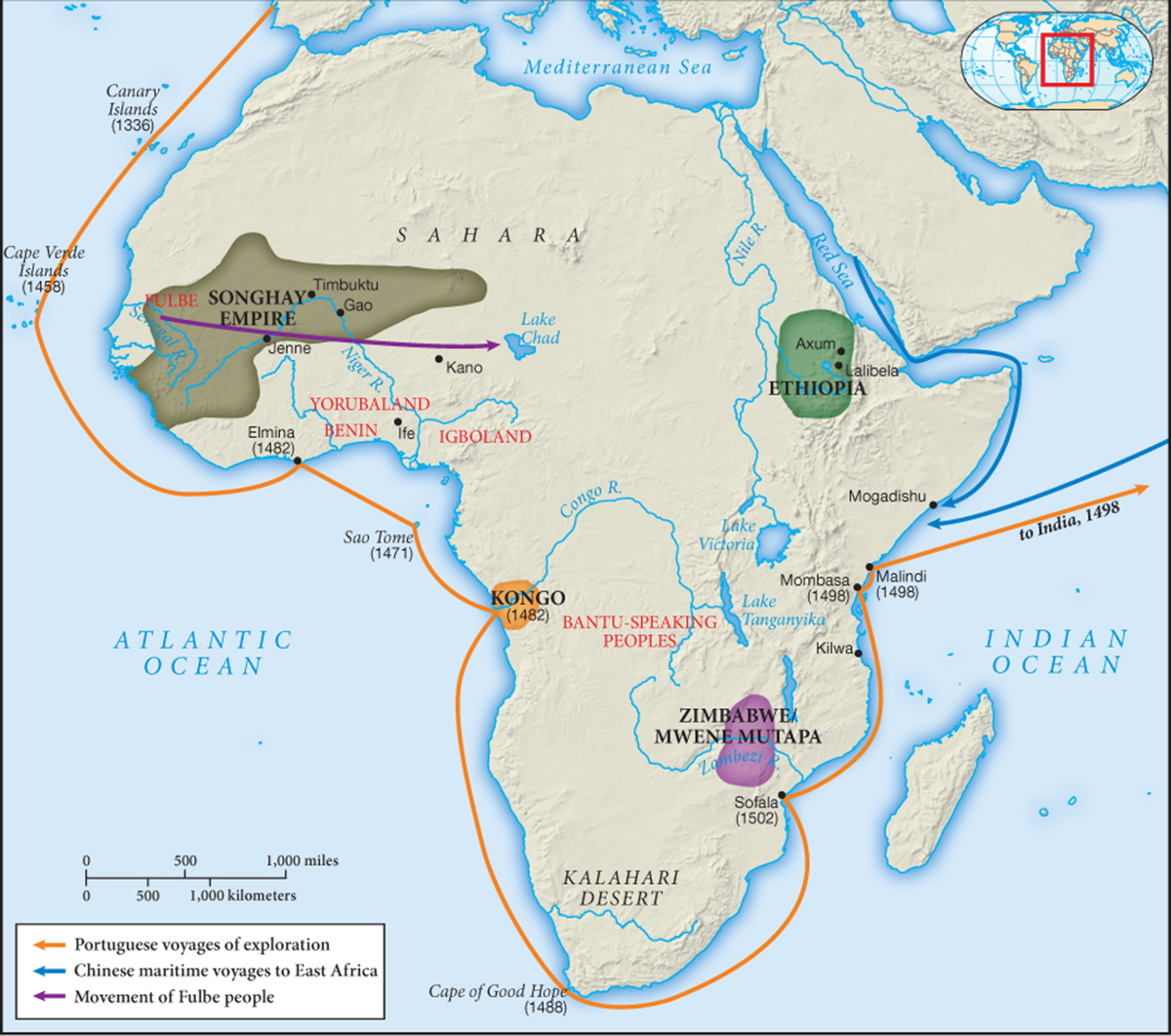European Comparisons: Maritime Voyaging
A global traveler during the fifteenth century might be surprised to find that Europeans, like the Chinese, were also launching outward-

Comparison
In what ways did European maritime voyaging in the fifteenth century differ from that of China? What accounts for these differences?
The differences between the Chinese and European oceangoing ventures were striking, most notably perhaps in terms of size. Columbus captained three ships and a crew of about 90, while da Gama had four ships, manned by perhaps 170 sailors. These were minuscule fleets compared to Zheng He’s hundreds of ships and a crew in the many thousands. “All the ships of Columbus and da Gama combined,” according to a recent account, “could have been stored on a single deck of a single vessel in the fleet that set sail under Zheng He.”8
Motivation as well as size differentiated the two ventures. Europeans were seeking the wealth of Africa and Asia—
The most striking difference in these two cases lay in the sharp contrast between China’s decisive ending of its voyages and the continuing, indeed escalating, European effort, which soon brought the world’s oceans and growing numbers of the world’s people under its control. This is why Zheng He’s voyages were so long neglected in China’s historical memory. They led nowhere, whereas the initial European expeditions, so much smaller and less promising, were but the first steps on a journey to world power. But why did the Europeans continue a process that the Chinese had deliberately abandoned?
In the first place, Europe had no unified political authority with the power to order an end to its maritime outreach. Its system of competing states, so unlike China’s single unified empire, ensured that once begun, rivalry alone would drive the Europeans to the ends of the earth. Beyond this, much of Europe’s elite had an interest in overseas expansion. Its budding merchant communities saw opportunity for profit; its competing monarchs eyed the revenue from taxing overseas trade or from seizing overseas resources; the Church foresaw the possibility of widespread conversion; impoverished nobles might imagine fame and fortune abroad. In China, by contrast, support for Zheng He’s voyages was very shallow in official circles, and when the emperor Yongle passed from the scene, those opposed to the voyages prevailed within the politics of the court.
Finally, the Chinese were very much aware of their own antiquity, believed strongly in the absolute superiority of their culture, and felt with good reason that, should they desire something from abroad, others would bring it to them. Europeans too believed themselves unique, particularly in religious terms as the possessors of Christianity, the “one true religion.” In material terms, though, they were seeking out the greater riches of the East, and they were highly conscious that Muslim power blocked easy access to these treasures and posed a military and religious threat to Europe itself. All of this propelled continuing European expansion in the centuries that followed.
The Chinese withdrawal from the Indian Ocean actually facilitated the European entry. It cleared the way for the Portuguese to penetrate the region, where they faced only the eventual naval power of the Ottomans. Had Vasco da Gama encountered Zheng He’s massive fleet as his four small ships sailed into Asian waters in 1498, world history may well have taken quite a different turn. As it was, however, China’s abandonment of oceanic voyaging and Europe’s embrace of the seas marked different responses to a common problem that both civilizations shared—